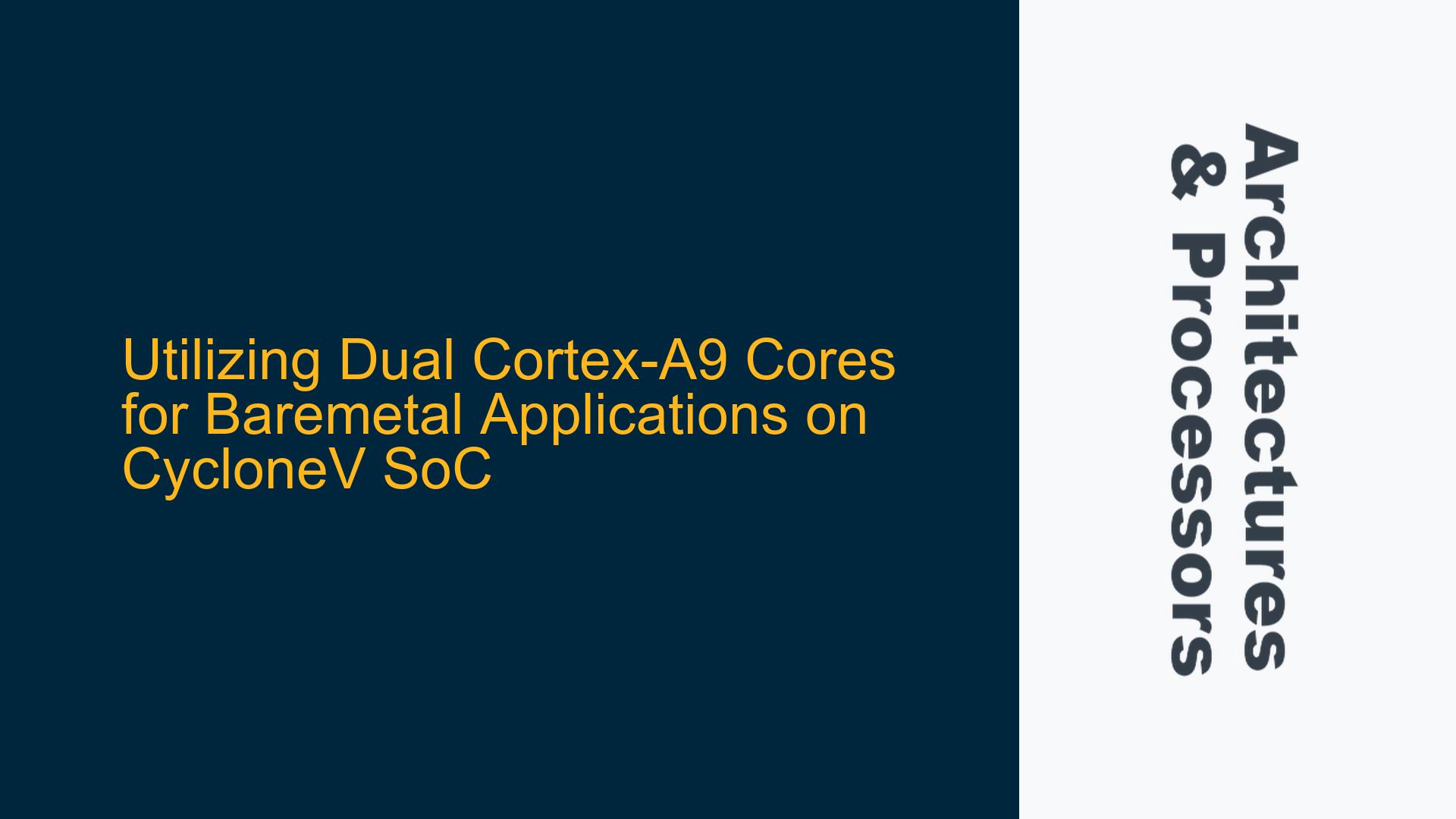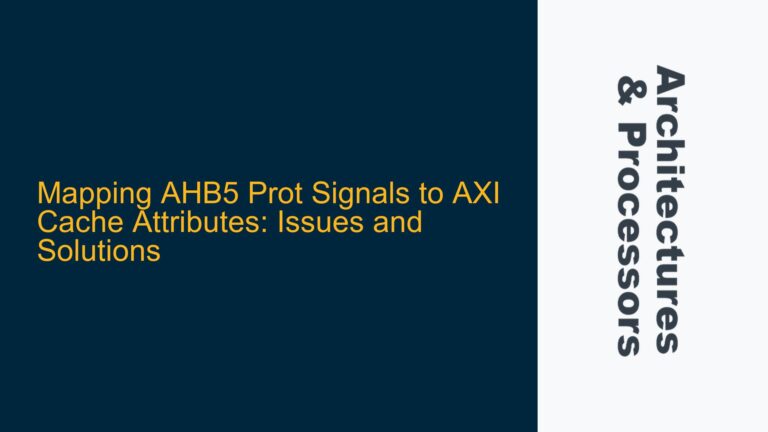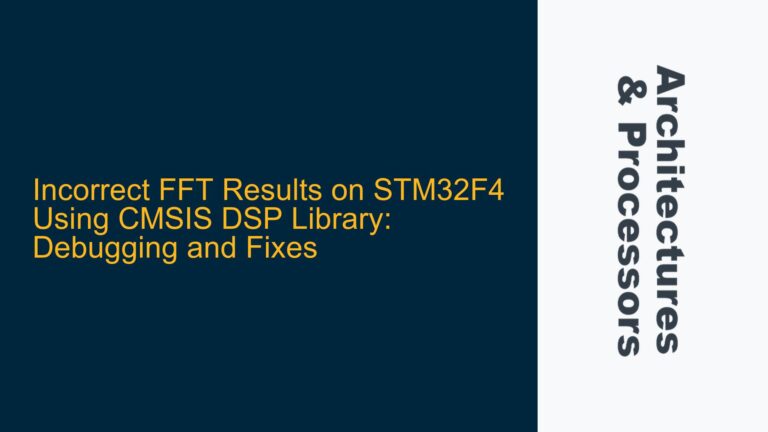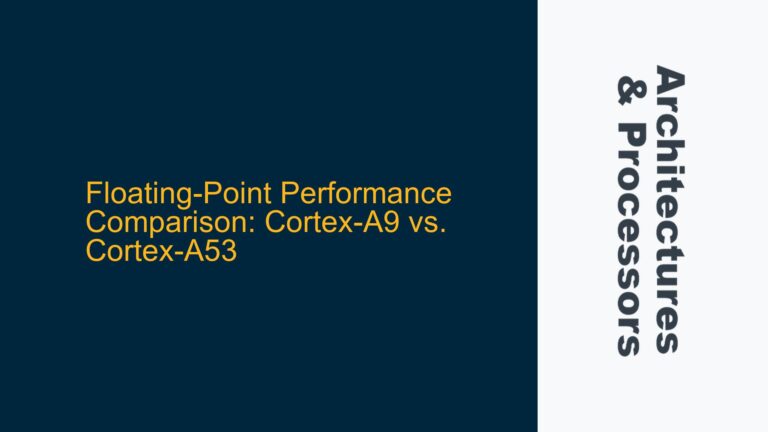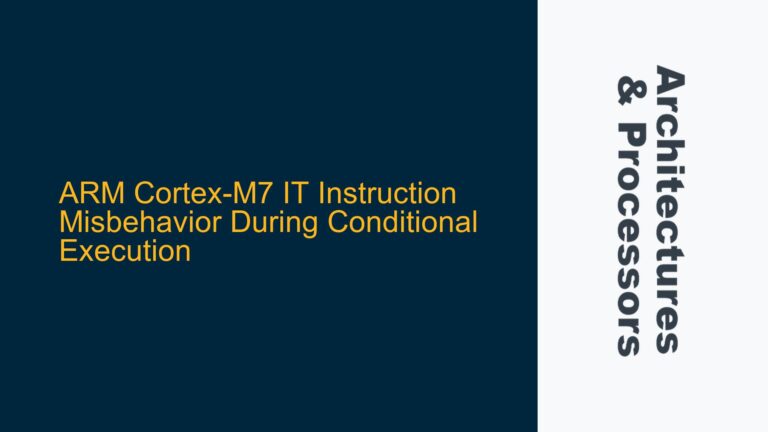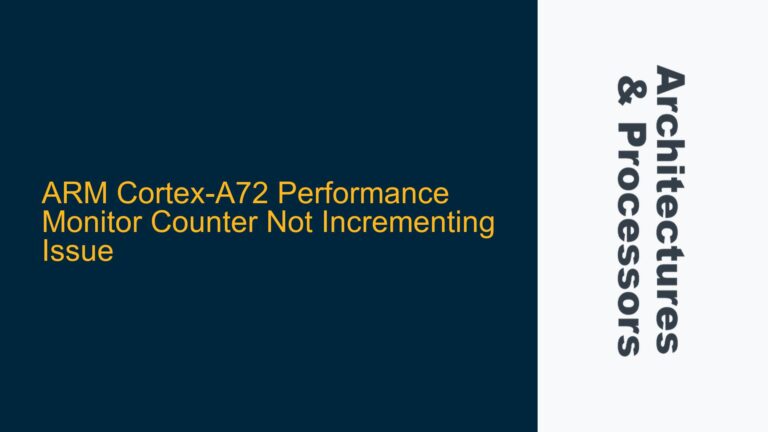Dual Cortex-A9 Core Initialization and Synchronization Challenges
When working with a dual-core ARM Cortex-A9 system like the CycloneV SoC, one of the primary challenges is ensuring proper initialization and synchronization between the two cores. The Cortex-A9 cores share a common L2 cache and are typically connected via an AXI coherency extension (ACE) interface, which allows them to maintain cache coherency. However, in a baremetal environment, where there is no operating system to manage core initialization and task distribution, the responsibility falls entirely on the developer to configure the cores correctly.
The Cortex-A9 cores in the CycloneV SoC are asymmetric in the sense that they can execute different code paths, but they share the same memory map and peripherals. Each core has its own private memory, such as the L1 instruction and data caches, but they share the L2 cache and main memory. This shared memory architecture introduces potential race conditions and synchronization issues, especially when both cores attempt to access shared resources simultaneously.
In a baremetal setup, the primary core (Core 0) is typically responsible for initializing the system, including setting up the memory controller, configuring the L2 cache, and enabling the MMU. The secondary core (Core 1) is usually held in a standby state until Core 0 completes its initialization and signals Core 1 to start executing its code. This handshake mechanism is crucial to avoid conflicts during the early stages of system boot.
The challenge lies in implementing this handshake mechanism without the aid of an operating system. Core 0 must ensure that all shared resources are properly initialized before releasing Core 1 from its standby state. Additionally, Core 1 must be able to determine when it is safe to start executing its code, which requires careful coordination between the two cores.
Core Initialization Sequence and Handshake Mechanism
The initialization sequence for a dual-core Cortex-A9 system involves several steps that must be executed in a specific order to ensure proper operation. The first step is to configure the system’s memory map, including the L2 cache and main memory. Core 0 is responsible for this task, as it is the first core to start executing code after reset. Core 0 must also configure the MMU to enable virtual memory addressing, which is essential for managing the memory map and protecting critical system resources.
Once Core 0 has completed the initial setup, it must signal Core 1 to start executing its code. This is typically done using a shared memory location that both cores can access. Core 0 writes a specific value to this memory location, indicating that the system is ready for Core 1 to start. Core 1, which has been in a standby state, continuously polls this memory location until it detects the signal from Core 0. Once Core 1 detects the signal, it begins executing its code.
The handshake mechanism must be carefully designed to avoid race conditions and ensure that Core 1 does not start executing its code before Core 0 has completed the initialization process. This can be achieved by using memory barriers and synchronization primitives, such as spinlocks or semaphores, to ensure that the cores do not access shared resources simultaneously during the initialization phase.
In addition to the handshake mechanism, Core 0 must also configure the interrupt controller to ensure that both cores can handle interrupts correctly. The Cortex-A9 cores use the Generic Interrupt Controller (GIC) to manage interrupts, and Core 0 must configure the GIC to distribute interrupts between the two cores. This includes setting up the interrupt priorities, enabling the appropriate interrupts, and configuring the GIC’s CPU interface for each core.
Implementing Cache Coherency and Memory Barriers
One of the most critical aspects of working with a dual-core Cortex-A9 system is ensuring cache coherency between the two cores. The Cortex-A9 cores use the AXI coherency extension (ACE) interface to maintain cache coherency, but this requires careful configuration and management in a baremetal environment. Without proper cache management, the cores may end up with inconsistent views of memory, leading to unpredictable behavior and system crashes.
To maintain cache coherency, the developer must ensure that both cores invalidate their caches at the appropriate times and use memory barriers to enforce the correct ordering of memory accesses. Memory barriers are essential for ensuring that memory operations are executed in the correct order, especially when dealing with shared resources. For example, if Core 0 writes data to a shared memory location and then signals Core 1 to read that data, a memory barrier must be used to ensure that Core 1 sees the updated data.
In addition to memory barriers, the developer must also manage the L2 cache to ensure that both cores have a consistent view of memory. This involves configuring the L2 cache controller to enable cache coherency and using cache maintenance operations, such as cache invalidate and clean operations, to ensure that the caches are synchronized.
The Cortex-A9 cores provide several instructions for managing the caches, including the Data Cache Clean and Invalidate (DCCIMVAC) instruction, which cleans and invalidates a cache line, and the Data Synchronization Barrier (DSB) instruction, which ensures that all memory operations are completed before proceeding. These instructions must be used judiciously to ensure that the caches are properly synchronized and that the cores have a consistent view of memory.
Debugging and Verification Strategies for Dual-Core Systems
Debugging and verifying a dual-core Cortex-A9 system in a baremetal environment can be challenging due to the complexity of the interactions between the two cores. Traditional debugging techniques, such as single-stepping through code, may not be effective in a dual-core system, as the behavior of one core can affect the behavior of the other. Instead, the developer must use more advanced debugging techniques, such as hardware breakpoints and trace debugging, to monitor the behavior of both cores simultaneously.
Hardware breakpoints allow the developer to set breakpoints on specific memory locations or instructions, which can be useful for monitoring shared resources and detecting race conditions. Trace debugging, on the other hand, allows the developer to capture a trace of the execution of both cores, which can be analyzed to identify synchronization issues and other problems.
In addition to debugging, the developer must also verify that the system behaves correctly under all possible conditions. This involves testing the system with different workloads and stress conditions to ensure that the cores can handle concurrent access to shared resources without causing conflicts or crashes. The developer must also verify that the cache coherency mechanisms are working correctly and that the cores have a consistent view of memory.
One effective verification strategy is to use a combination of simulation and hardware testing. Simulation allows the developer to test the system in a controlled environment, where it is easier to reproduce and debug issues. Hardware testing, on the other hand, allows the developer to verify that the system behaves correctly in real-world conditions. By combining these two approaches, the developer can ensure that the system is both functionally correct and robust.
Conclusion
Utilizing dual Cortex-A9 cores in a baremetal environment on the CycloneV SoC presents several challenges, including core initialization, synchronization, cache coherency, and debugging. However, with careful design and implementation, these challenges can be overcome, allowing the developer to fully leverage the power of the dual-core architecture. By following the guidelines outlined in this post, developers can ensure that their dual-core Cortex-A9 systems are properly configured, synchronized, and verified, leading to reliable and efficient operation.
